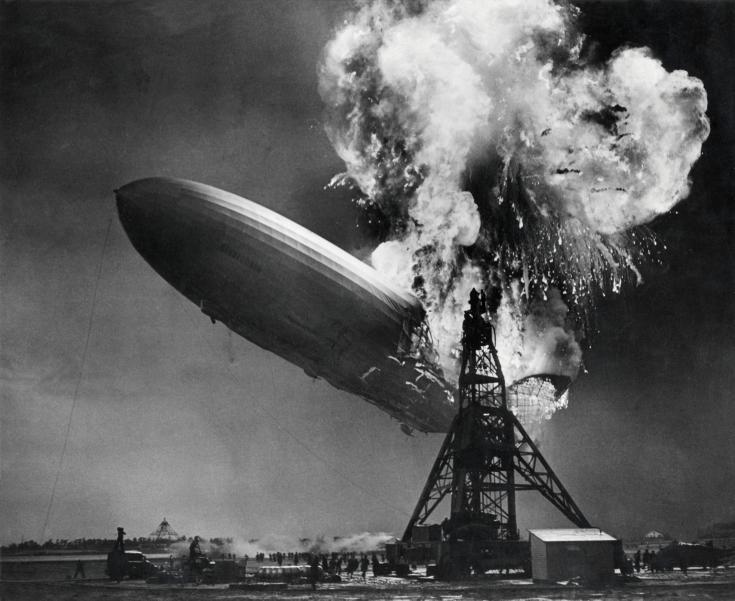Hindenburg
Oh the humanity. How the Hindenburg worked.
The Hindenburg was the largest zeppelin in human history. It was about the size of the RMS Titanic at 804 feet long and had a top speed of 84 miles per hour. There was a grand piano on the deck but because a normal grand piano would weigh about 1000 pounds, which would be to heavy for an airship. they ended up making the grand piano out of aluminum so that it only weighed about 356 pounds. It was powered by four 1,100 horsepower diesel engines. In 1936 the Hindenburg was scheduled to fly across the Atlantic ocean for a series of 10 round trips to America. Although the Hindenburg was supposed to be filled with helium, Nazi Germany had difficulty finding suppliers due to their political ideology and filled it with hydrogen gas instead (a highly flammable gas). The Hindenburg was filled with 7 Million cubic feet of hydrogen gas. On its second flight, the Hindenburg burst into flames when descending in New Jersey. It only took forty seconds for the ship to drop 200 feet and burn up with thirty-five of the ninety-seven people on board dying in the crash. There have been other zeppelin crashes but this one was unique because it was caught on film. This explosion marked the end of zeppelin travel.
RELATED STORIES:
- https://www.smithsonianmag.com/smithsonian-institution/80th-anniversary-hindenburg-disaster-mysteries-remain-180963107/
- https://www.britannica.com/topic/Hindenburg
- https://www.history.com/this-day-in-history/the-hindenburg-disaster
- https://www.airships.net/hindenburg/disaster/
- https://www.livescience.com/58959-hindenburg-crash.html
TAKE ACTION:
How to Visit the Hindenburg Crash Site – Lakehurst, New Jersey















